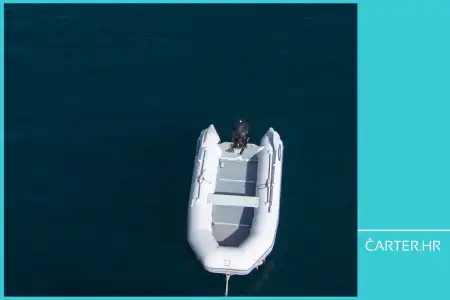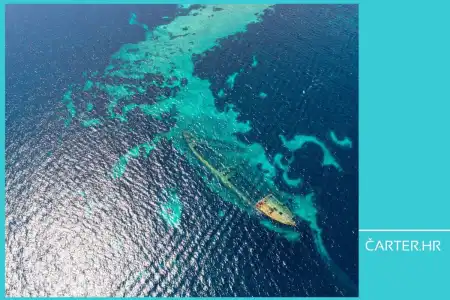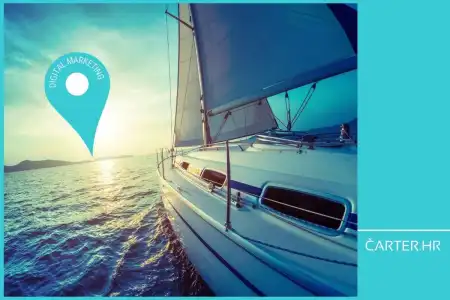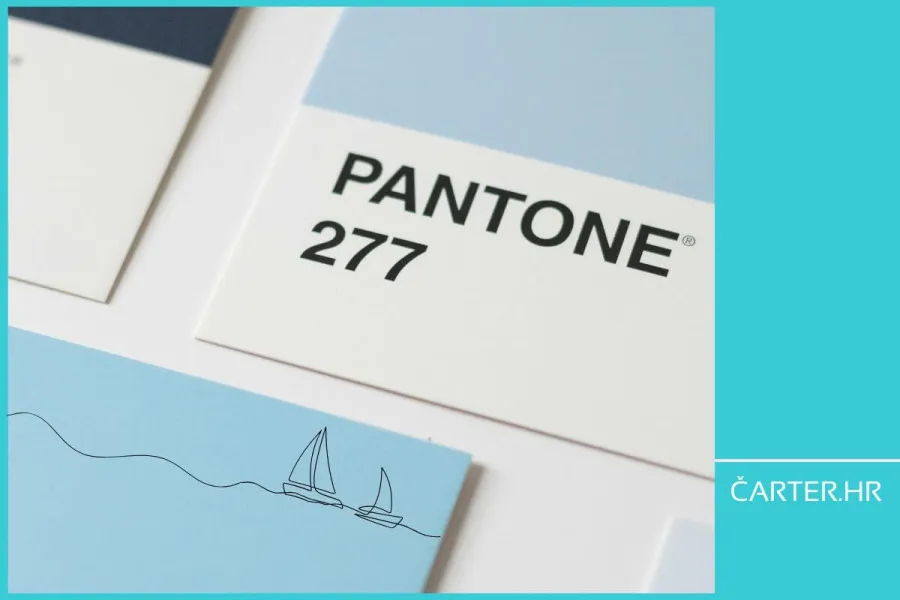
What graphic design (isn’t), what it actually serves for, and how it affects your business – if you’ve ever asked yourself that (or maybe you haven’t, but you should have), the latest article by Barbara Zec is for you. Barbara, as an experienced designer, breaks down common myths, explains the role of a designer, and shows why design should be seen as a communication tool, not just as decoration.
Do you actually know what graphic design is? If I followed the quote attributed to Einstein or Feynman, which says that “if you can’t explain it simply, you don’t understand it well enough,” I’m afraid that even after two decades in this profession, I’m not sure I have the answer. That’s not because “I don’t know what I’m doing,” but because there are too many answers, given that graphic design is present – everywhere. So I set myself the task of trying to systematically answer that question. And not just that, I also want to convince you to invest in it. So let’s talk about design. No sugarcoating.
What graphic design is not
The concept of graphic design is widely known and used today, but if you asked ten people what it includes and what a graphic designer does, you’d get ten different answers, not necessarily correct ones. That’s why I’m listing four things below that are often confused with the concept of graphic design. Let’s clear that up first, and then we can move on to what really matters.
Graphic design is not Adobe Photoshop. Nor Illustrator. Nor Canva. You can occasionally hear from potential clients, “I would have done it myself, but I don’t have the programs.” These programs, among others, are not magic wands that will make you a designer. They are tools that designers currently use.
A graphic designer does not produce the finished product you hold in your hand. People often think that the designer “draws” and produces and delivers the final material. The designer conceptualizes and prepares the document, usually in PDF format, which takes its physical form at the printing house based on what the graphic designer created and prepared. Printing and design are not the same.
Graphic design is not a work of art. “Draw something that looks nice.” A designer uses visual elements to create a composition, and maybe that leads to confusion. However, design can look attractive, but that is not its purpose. The purpose of graphic design is to communicate an agreed message that provokes some action in the viewer. For example, to contact you or buy something. A work of art is personal and simply must – exist.
Graphic design isn’t even graphic design anymore. It has long since moved from paper to screens. So today we more often use the term visual communication because it encompasses all media, both analog and digital. About 20 years ago, the graphic industry changed rapidly and became digital, so I started my education as a graphic designer and finished it as a visual communications designer.
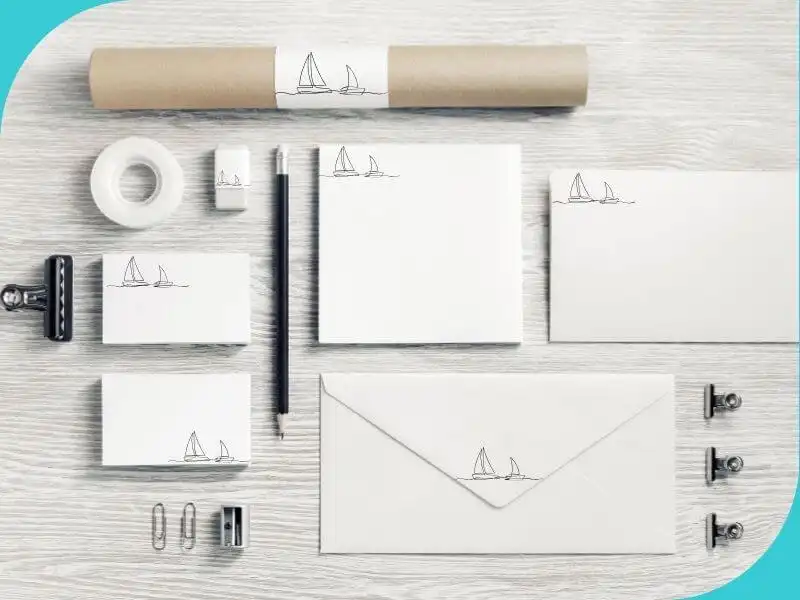
What a graphic designer brings to your business
What can a designer do for you, when the things above can’t? Can you manage without one?
From experience, you can. Until you realize you’ve wasted money on a tool you don’t know how to use, on a logo that’s unreadable, on a flyer no one wants. So you learn from your own mistakes and ask a designer to help you.
A graphic designer translates your verbal message into a visual language using the basic principles and elements of design. Sure, you can try telling everyone your business story and goals, but how much time would it take to convey that message to a large number of people? For example, at a nautical fair. Your brand’s graphic material “speaks” for you even when you’re not around. Even while you’re sleeping or resting. It speaks from posters, TV screens, banners.
When you have a strategy in place, you know where you're going and what you want to say to your clients, you need to shape it into a coherent message. Repeat it across all communication channels. Sometimes in detail, sometimes in just a few words. And to help the recipient remember what you said or wrote, the image comes into play.
It’s no coincidence that they say “a picture is worth 1000 words.” And you’ve probably already heard that humans receive over 90% of information through their eyes. That’s why visual communication, i.e., graphic design, is the most widely used medium in marketing and customer communication. But graphic design isn’t just used to create promotional materials and sell. It also shapes and underlines the emotion you want to associate with your brand, gives guidance, warns, informs, entertains...
A graphic designer creates all those materials. Moreover, a good and experienced designer easily navigates through all media, because visual language has its rules that are the same whether it’s a digital banner, packaging, or trade show material. And when you establish a good business relationship with a designer and trust their expertise, you can finally focus on your core business and let them shape a consistent, high-quality image of your brand and make sure everything runs “like clockwork.” Because a designer, besides creating visual solutions, can also communicate with various contractors who produce those solutions, so you don’t have to deal with negotiations and arrangements with print shops and others whose language you don’t speak. The designer can help you there, at the very least as a translator, but also take that responsibility off your shoulders. All that’s left for you is to approve the offer and verify the solution, without wasting time on technical details.

Collaboration with a designer
Now that we’ve covered what a designer does (and doesn’t do), and how they can help you, it’s time to answer the question of how. Because when creating visual solutions, just like in any other service-based business, the process itself is extremely important.
You already know that people don’t just look for the best sailboat. People are looking for the best experience. From the first inquiry, through the payment to boarding the sailboat, and returning. It’s the same with design. The design process requires open communication and fulfilling your responsibilities. Because the designer needs information and materials to work with. Just like you need information and materials to do your job the best you can. Without that, you’re left guessing, and that usually ends in frustration.
Why do I use the term collaboration with a designer? Because there are two ways you can order some graphic material. The first is the purchase of a specific material. For example, you need a brochure for your charter. You give the designer input, they give you an estimate and start working, deliver the solution, possibly make a few changes until you get what you wanted (in an ideal world). So, you order a flyer, you get a flyer, you pay, and you say goodbye. The second option is to find a designer you can talk to, who can give you information you don’t have, who will listen to you and educate you. Someone who works with you, not for you.
The benefits of long-term collaboration are multiple. Just compare how much easier it is to work from season to season with the same employees, compared to finding new ones every year. It’s the same with design. If you have a trusted partner, you don’t have to waste time looking for new designers for every piece of material you need. You don’t have to keep explaining what you do, what your brand is, and what you need. Because over time, the designer gets to know your business and brand in depth. Which makes them fast and efficient. So much so that after a while, they know what you need before you even ask. Not to mention they’ll be happy to jump in when it’s urgent, because you’re a reliable client. And the cost of design can also be lower if you go for, for example, a flat-rate collaboration.
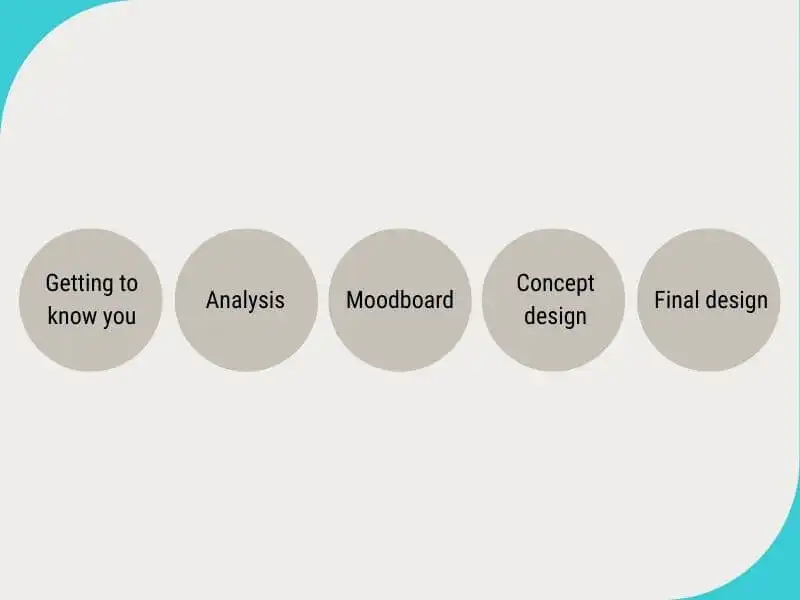
The graphic design process
Let’s say you’re currently in the process of launching a new brand. You need a visual identity and all the necessary materials to start working. You’ve agreed on a budget and general deadlines with the designer. What comes next?
Here’s the process I go through with my clients, so you know what to expect.
1. Getting to know you
In this phase, the designer asks a ton of questions. Because they need to get to know your brand and your needs. This phase includes verbal and written form, which leads to the next step. It includes questions not only about you and your brand but also about your clients and competitors.
2. Analysis
Based on your input (usually in verbal form, and later written), the designer conducts an analysis. This step is important so that everyone is on the same page and to confirm that all the information is correct, and that the designer has understood exactly what is being asked. Also, in this phase, the designer researches the competition and visual patterns common to the entire category.
3. Moodboard
The next step is visualizing the so-called look & feel. Based on defined terms that are mostly in written form, the designer creates 2 to 3 different moodboards. These are literally “papers” where visual elements like color, style, typography, and photos are collaged together to evoke the emotion your new brand wants to achieve.
4. Concept design
After the look & feel has been chosen, the designer begins “drawing.” They create the first proposals of the logo and other elements of the visual identity (e.g. define brand colors, patterns, create mockups of materials to show how everything will work in the real world). After one concept is selected, the (second to) last phase comes.
5. Final design
The designer prepares a folder for you with all possible logo formats you’ll ever need, and also prepares guidelines for the use of the design. Depending on which materials were agreed upon, they also create the final designs and communicate with contractors (if agreed) to ensure that everything turns out as planned.
I’d add one more step, because I think it’s important and I regularly include it, and that is the seemingly trivial follow-up, i.e. maintenance. Namely, after the designer has delivered everything needed, their job is officially done. You have all the materials and can use them however you wish. However, for your visual identity to even have a chance of becoming a recognizable brand, you must consistently use the defined colors, logos, and other elements. You’d be surprised how many people spend significant budgets on creating a new visual identity and then, as soon as the designer is out of sight, ruin it by adding, changing, editing...
That’s why, after I deliver the initial materials, I keep track of what’s happening with them, and I’m not shy about speaking up if I see you’re hurting your brand through careless “designing” and patching together additional materials. Because over the course of the project, we also become attached to your brand and want it to live and grow. And that can only happen if it’s focused and guided. Strategically and visually. Without wandering off.
Defined steps like these ensure that the process runs smoothly because you don’t have to wonder what the designer is doing and you have an overview at every step. On the other hand, the designer knows they’re on the right track because only after your “yes” at each phase do they move on to the next. No wasted time and no surprises.

Why you need a graphic design(er)
This usually comes at the beginning, followed by the details, but sometimes it’s good to turn things around and start from the end. Because maybe by now you already have a clear picture of how you could benefit from working with a designer. Or you’re already thinking about the graphic materials you need to prepare for the new season. So I believe you already have your answer to the why.
Generally, a graphic designer translates your message or call to potential clients into a single, clear, and recognizable image, which is technically adapted to a range of physical and digital surfaces, from the smallest sticker to a monograph celebrating 50 years of your successful brand. Not a bad image, right?
Categories of trends
- News
- Sale
- Marketing
- SEO
- Web design
- Social media
- Technology
- Regulations
- Management
- Education
- Finances
- User experience
Newsletter
Sign up for the newsletter and receive the latest trends and tips straight to your inbox

